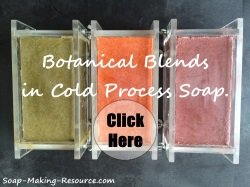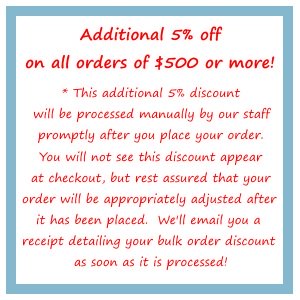Saponification Table Plus The Characteristics of Oils in Soap
How much Lye should you use in order to saponify a specific fat or oil? Use this simple saponification table to find out!
You can click on each oil or fat within this chart to learn more about its benefits, detriments and how it is used in soap making.
| oil or fat (acid) | SAP | Hard/Soft | cleansing | fluffy lather | stable lather | skin care |
| avocado oil | 133.7 | soft | fair | yes | no | amazing! |
| coconut oil | 191.1 | hard | great | yes | no | fair |
| castor oil | 128.6 | soft | fair | yes | yes | great |
| olive oil | 135.3 | soft | good | no | no | great |
| palm oil | 142 | hard | great | no | yes | fair |
| peanut oil | 137 | soft | fair | no | yes | great |
| soybean oil | 135.9 | soft | good | no | yes | fair |
| sweet almond oil | 137.3 | soft | good | no | yes | amazing! |
| jojoba oil | 69.5 | soft | fair | no | yes | great |
| kukui nut oil | 135.5 | soft | good | no | yes | great |
| lard | 138.7 | hard | good | no | yes | fair |
| tallow | 140.5 | hard | good | no | yes | fair |
Before you start making conversions on your own, be sure to read (and re-read) through the entire explanation on this page of how to use this chart successfully. At first it will seem like a complicated process, but with a little bit of practice and repetition, it will become an absolute cinch.
On the chart above you'll notice 7 columns: "Oil or Fat", "SAP", "Hard/Soft", "Cleansing", "Fluffy Lather", "Stable Lather" and "Skin care". Except for "Oil or Fat" which merely tells you which ingredient is being discussed and "SAP" which tells you the amount of sodium hydroxide (lye) needed in order for saponification to occur each of these sections is a characteristic of soap that could be produced by a specific acid. Click here to learn more about fatty acids and soap making.
Keep in mind that most saponification tables merely reveal the Saponification value (more on this later) and not the characteristics of oils in soap; but for your convenience, I've added the 5 most important attributes that are contributed to your finished product by using a specific fat or oil.
|
Sign Up Today!
*Your information is SAFE with us! |
Allow me to briefly explain each soap distinction and its importance:
- Hard/Soft - This column will tell you if a specific acid will produce a hard or soft bar of soap. If a bar of soap is too soft it will dissolve prematurely and become a mushy mess; so make sure that your soap has a certain level of hardness by combining hard oils with soft oils.
- Cleansing - This column will tell you how well an acid cleans. Keep in mind that all soaps clean relatively well, but some oils produce a soap that is more harsh then others. For the best results, try to combine oils that are mild when saponified with oils that are more harsh when saponified for a balance between a cleansing and conditioning bar.
- Fluffy Lather - This column will tell you whether or not a specific acid will produce a fluffy lather. A fluffy lather is thick and bubbly but washes away easily.
- Stable Lather - This column will tell you whether or not an acid will produce a stable lather. A stable lather has very little substance but is harder to wash away. In general, you want a combination of ingredients that produce both fluffiness and stability to your soap's lather. Again, your goal here is balance.
- Skin care - This column will tell you how beneficial a soap produced by a specific acid is to the skin. It depends mostly on the presence of nourishing vitamins, its mildness and moisturizing abilities.
Explaining how to use the saponification table will take more then just a few words. Understanding the mathematical equation required is a good idea for completeness sake but not essential to make soap. At the end of this page, I reveal a neat little short cut that anyone can use so don't be scared off by the seemingly complicated process! Just read through it once and if you don't want to learn it, use the simplified explanation at the end.
The SAP column (Saponification value) reveals simply how many milligrams of base is required to completely saponify 1 gram of an acid (oil or fat). This number usually tells you how much potassium hydroxide (potash) is needed instead of how much sodium hydroxide (lye) is needed.
If you have read the section on this website about saponification, you should know that the only ion required for the soap making reaction to take place is the hydroxide ion. Both potassium hydroxide and sodium hydroxide have the same number of hydroxide ions so the amount of base should be the same regardless of which one is used, right?
Wrong! The molecular weight of potassium hydroxide is less then the molecular weight of sodium hydroxide therefore less sodium hydroxide is required then potassium hydroxide to saponify the same amount of fats or oils. Sodium hydroxide's molecular weight is only 40/56.1 of potassium hydroxide's weight.
Therefore, in order for the same amount of hydroxide ions to be incorporated into the soap making recipe we need to take every Saponification value that reflects potassium hydroxide as the base and multiply it by 40/56.1 in order to get the sodium hydroxide Saponification value. This is truly an arduous process to say the least.
So what's the Bottom line? Since I only use sodium hydroxide for a base (and I suggest you do the same, unless you are making liquid soap) I have taken the liberty to convert the numbers for you so that they apply to sodium hydroxide.
This means that the SAP value on my saponification table represents how many milligrams of lye (sodium hydroxide) are needed to saponify exactly 1 gram (1000 milligrams) of the fat or oil in question.
Let me give you a few examples to illustrate this fact:
Example 1: According to our saponification table, palm oil has an SAP value of 142. This means that it takes exactly 142 milligrams of lye in order to saponify 1000 milligrams of palm oil.
Example 2: coconut oil has an SAP value of 191.1. This means that it takes exactly 191.1 milligrams of lye in order to saponify 1000 milligrams of coconut oil
Example 3: Avocado oil has an SAP value of 133.7. This means that it takes exactly 133.7 milligrams of lye in order to saponify 1000 milligrams of avocado oil.
So how do we use these numbers to determine the amount of lye needed in a soap making recipe? Well, we have to convert the SAP values into a more usable form so that we can find out the weight of lye needed to saponify the weight of an oil being used.
Remember basic algebra? One familiar rule is that whatever you do to one side of an equation, you must do to the other side. Let's use avocado oil as an example:
133.7 milligrams of lye is needed to saponify 1000 milligrams of avocado oil. At this point, we want to make the units of measurement the same. So if we take 133.7 milligrams/1000 and 1000 milligrams/1000 we get values that are both in milligrams. You can now see that .1337 milligrams of lye is needed to saponify 1 milligram of avocado oil.
Since the lye and avocado oil is in the same unit of measurement we can take the new SAP value .1337 and multiply it by the weight of the oil being used. So let's say my recipe calls for 3 pounds of avocado oil. To find out the amount of lye needed to fully saponify the 3 pounds multiply 3 times .1337. According to our calculations, exactly .4011 pounds of lye is needed to saponify 3 pounds of avocado oil.
Simply put (this is the short cut I was talking about above): Take the SAP value in the saponification table, divide it by 1000 and multiply it by the weight of the oil being used.
Let me give you a few more examples just for clarification:
Example 1: Say your recipe calls for 2 pounds of coconut oil. Take 191.1 (the SAP value for coconut oil)/1000 = .1911 x 2 pounds of coconut oil = .3822 pounds of lye required to saponify 2 pounds of coconut oil.
Example 2: Say your recipe calls for 9 pounds of jojoba oil. Take 69.5 (the SAP value for jojoba oil)/1000 = .0695 x 9 pounds of jojoba oil = .6255 pounds of lye required to saponify 9 pounds of jojoba oil.
Example 3: Say your recipe calls for 12 pounds of olive oil. Take 135.3 (the SAP value for olive oil)/1000 = .1353 x 12 pounds of olive oil = 1.6236 pounds of lye required to saponify 12 pounds of olive oil.
Now, if you've spent any amount of time on this website, you probably know by now that more then one acid is almost always used in any given soap recipe. So how do you calculate the amount of lye needed for an entire recipe with multiple fats and oils? Simple... Just add the cumulative amounts of lye needed for each acid together to reach a sum total of lye needed.
Let's pretend that the 3 examples above are a single soap recipe. You want 2 pounds of coconut oil, 9 pounds of jojoba oil and 12 pounds of olive oil to make up your batch of soap.
All you need to do now is add together the total amounts of lye needed to saponify each oil separately in the recipe to realize how much lye is needed in total for the entire batch of soap: .3822 pounds + .6255 pounds + 1.6236 pounds = 2.6313 pounds of lye to completely saponify all the oils in the recipe.
Superfatting
Notice that throughout this tutorial, I always say "completely saponify"? Each SAP value on the saponification table tells you exactly how much lye is needed in order to turn 100% of the fats or oils into soap. In reality, we don't want to do this. If all the ingredients were completely saponified your soap would be way too caustic and harsh.
This is where superfatting comes into play. Superfatting is where you allow a certain percentage of fats and oils within your recipe to remain unsaponified by discounting your lye by a certain percentage.
Unfortunately, superfatting is not a cut and dry process. I personally use a 5-8% discount for most oils to start which usually works out pretty well, but you may need to make some adjustments depending on your preferences.
The key is that a balance needs to be met. If too much oil or fat is left unsaponified (too large of a discount), the soap will go rancid prematurely and be too soft whereas if too little oil or fat is left unsaponified your finished product will be way too harsh.
So your final step in the equation is to multiply the amount of lye needed to completely saponify your fats and oils by .92 - .95 (except for castor oil, which would be .95 maximum) depending on how much you want to superfat to reach the discounted amount of lye.
Let me give you one more example just for good measure:
Example: Your recipe consists of 4 pounds of coconut oil, 1 pound of avocado oil and 3 pounds of castor oil. How much lye is needed for this recipe?
Take 191.1 (SAP value of coconut oil)/1000 = .1911 x 4 pounds = .7644 pounds of lye to completely saponify 4 pounds of coconut oil. Now multiply .7644 pounds x .92(assuming we are using an 8% lye discount) to get .7032 pounds, which is the discounted amount of lye to use in order to saponify coconut oil in a recipe.
Now take 133.7 (SAP value of avocado oil)/1000 = .1337 x 1 = .1337 pounds of lye to completely saponify 1 pound of avocado oil. Now multiply .1337 pounds x .92 to get .1230 pounds, which is the discounted amount of lye needed in order to saponify avocado oil in a soap recipe.
Now take 128.6 (SAP value of castor oil)/1000 = .1286 x 3 = .3858 pounds of lye to completely saponify 3 pounds of castor oil. Now multiply .3858 pounds x .95 (because you only discount castor oil by 5%) to get .3665 pounds of lye to saponify castor oil in a recipe.
Now add your totals together: .7032 pounds + .1230 pounds + .3665 pounds = 1.1927 pounds of lye. This is the amount of lye that you will use in this example soap making recipe to saponify your fats and oils at a discount so that for skin care purposes some of your fats and oils remain unadulterated.
I hope that you enjoyed this tutorial and will continue to explore the many pages on soap-making-resource.com. If you have any questions about the chemistry of soap making please feel free to contact me!
Click here to learn how to make soap step by step.
Return from saponification table - characteristics of oils in soap to the soap making ingredients main page. Return to the soap making resource home page.











